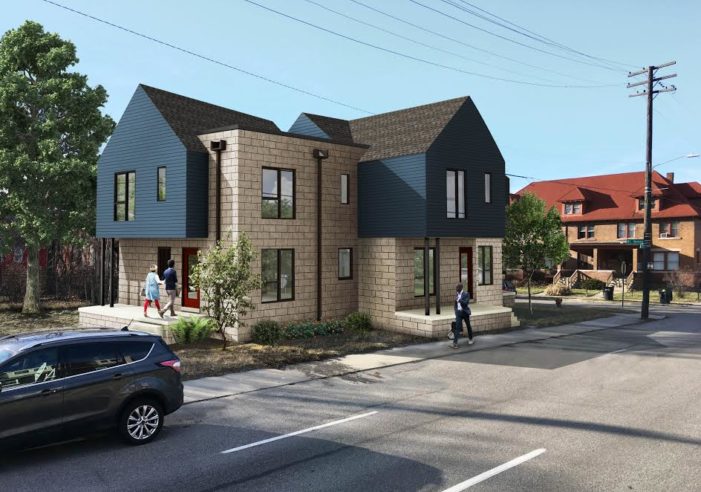When TheHUB spoke to Housing and Revitalization Director Arthur Jemison last fall he was optimistic, but cautious, about emerging new home constructions that don’t depend on public subsidy.
One new project recently reported by Develop Detroit suggests that we may be moving in the direction of greater progress. The Marwood Apartment Building was acquired by speculators determined to make a buck by demonstrating that the North End was ready for high-end, luxury apartments. The neighborhood, located around the northern terminus of the vaunted QLINE light rail, has struggled with high rates of vacancy, disinvestment, and blight.
The idea was to demonstrate viability and flip it to make a quick buck. But Develop Detroit saw an opportunity to create a more equitable solution to address the city’s housing shortage – and bought the property from the speculator.
“It’s great that you can command those rents, right?” says Ben Philips, vice president of the non-profit development organization. “But you don’t want to kick out the existing residents. We thought, ‘We’re the right buyer.’ We can renovate that building, build new apartments next to it, and that way we can do it as a mixed-income project.”
Develop Detroit, formed in conjunction with the national Housing Partnership Network, saw the opportunity as a demonstration of the market’s viability, but also as an opportunity to preserve affordable housing. The collaboration enlisted a combination of philanthropic funding, New Market Tax Credits, and additional contributions from JPMorgan Chase.
The Marston forms an architectural anchor for a new, scattered-site development project that will begin in the North End and expand to Grandmont-Rosedale. Single-family homes will have various price points based on whether they are detached or attached, starting at $100,000. While these 70 homes will only translate to 14 affordable units available to occupants at 80 percent area median income, Develop Detroit’s Executive Director Sonya Mays says the additional 53 Marston apartments will include affordable units as well.
“We view the city’s affordability mix as a floor, not as a ceiling,” she says, citing the ordinance that a minimum 20 percent of units in new development meet the 80 percent area median income designation.
Area median income in the region is two to three times higher than in the city of Detroit, meaning that 80 percent of the median income in the city would be paying approximately a third of the rent that someone in the larger metro region would be paying.
Bordered by the major transit corridor of Woodward and a stone’s throw from New Center, the North End has historically served as a significant neighbor to greater downtown. Intersecting at points in Detroit, Highland Park, and Hamtramck, the community has also been a nexus of important change throughout the years. Dividing Hamtramck and adjacent neighborhoods in 1959, the construction of I-75 led to a population exodus and related deterioration in the North End. But the commercial strip along Woodward Avenue remained mostly occupied and has undergone a substantial transformation as developers and speculators moved in during Detroit’s pre- and post-bankruptcy era.
South of Grand Boulevard and bounded by the Amtrak rail line that travels between Detroit, Troy, and Pontiac, Milwaukee Junction offers a wealth of intact industrial architecture including some of Detroit’s most ambitious adaptive reuse projects. For example, the Chap Lofts were converted from a former film studio overseen by Jamison “Jam” Handy, Olympic swimming medalist-turned-filmographer for General Motors, and that building was converted from an automotive parts warehouse.
A vibrant creative scene thrives in the neighborhood, from Red Door Digital, a printing company on Oakland Avenue that hosts frequent community events, to the Howrani photography and film studios on East Grand Boulevard and Katherine Craig’s storied rainbow mural on the western wall of 2937 East Grand Boulevard nearby. The mural was at the center of an intellectual property battle after a suburban investor planned to develop the site and, in the process, destroy the mural.
Peter Scher, of JPMorgan Chase attended the announcement of the Marston development, noting Chase’s interest in helping sustain the North End.
“When we started our work here, we realized … as important as the money and investment would be, that alone wouldn’t be enough,” Scher said.
“There are too many examples of people writing big checks, and hoping for the best, and walking away.”


